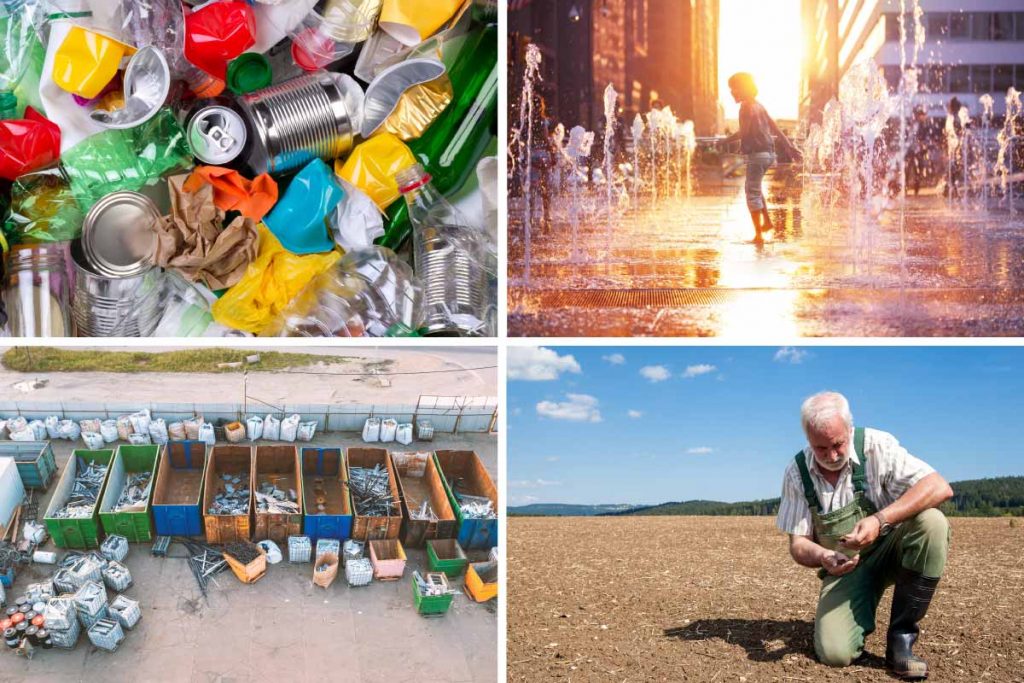
The challenges of municipal climate protection
Before you look for suitable funding, it makes sense to record your planning and financing status. Municipalities that are still in the concept phase have different funding needs than those with concrete climate protection projects. Start by preparing a budget proposal, and then search specifically for the right funding to support your municipal climate protection efforts.
How municipalities can act on climate protection now — and secure funding
Building the foundation of municipal climate protection
For municipalities starting at the foundation, there are several attractive funding options. Support is available for developing climate protection concepts or for financing a dedicated climate protection manager. One key program is the Kommunalrichtlinie (Municipal Guideline) of the National Climate Initiative (NKI), part of the National Climate Initiative run by the Federal Ministry for Economic Affairs and Climate Action (BMWK). Applications are open until the end of 2027 and cover both strategic planning and concrete investments. With this funding, municipalities can create climate protection jobs, carry out feasibility studies, and develop effective concepts for local action.
Funding of specific municipal climate protection projects

Once your climate protection concept is in place, the next step is turning plans into action. A good first stop is the National Climate Initiative (NKI), which offers wide-ranging support for specific projects. This climate protection funds covers everything from strategic measures to hands-on implementation. You can find detailed guidance and examples directly on the National Climate Initiative’s website (only in German).
Beyond the NKI, there are many other climate protection funding opportunities focused on particular areas of climate action. A strong example is the Federal Funding for Efficient Buildings (BEG – only in German), managed by the Federal Office for Economic Affairs and Export Control. This program helps municipalities renovate buildings, cutting energy costs for the long term. Especially relevant is the subprogram BEG NWG – Non-Residential Buildings, which supports upgrading the energy efficiency of existing buildings, including façade renovations and modern ventilation systems.
At the European level, the LIFE Program provides broad funding opportunities. Within the LIFE subprogram Climate Change Mitigation and Adaptation (CLIMA), municipalities can apply to specific calls for proposals tailored to their needs. This makes it an excellent option for projects with a European dimension.
How the Klima-Taler app helps municipalities reach goals and unlock funding
Successful funding applications often require measurable targets that demonstrate the impact of climate protection measures. The Klima-Taler app provides exactly that. It motivates citizens with gamification elements to take part in achieving municipal climate goals. At the same time, it delivers valuable insights into mobility patterns through anonymized data, creating a solid basis for planning climate-friendly traffic measures. Just as important, the app enables direct communication with residents through push notifications. With these three pillars — activation, data, and communication — the Klima-Taler app helps municipalities both reach their climate targets and strengthen their position for funding programs.
Adapting to the impacts of climate change
Adaptation measures are just as important as direct climate protection — and they are also eligible for funding. Many of them complement climate protection financing. A good example is this program from Zukunft – Umwelt – Gesellschaft (ZUG), commissioned by the Federal Ministry for the Environment (BMUKN). It supports municipalities in unsealing land to create more green spaces in cities, contributing to the “sponge city” approach.
State-level climate protection funds for municipalities
Beyond EU and federal funding, most German states have launched their own climate protection funds. Each one emphasizes different priorities. In several German states for instance, LEADER supports rural development strategies. In Berlin, the BENE 2 program funds diverse initiatives that contribute to the city’s path toward climate neutrality. Thuringia recently updated its program to promote low-CO₂ mobility in public transport, both within cities and in surrounding areas. While the range of climate protection financing is too broad to list in full, every state provides its own overview to help municipalities identify suitable funding opportunities.
Financing options through KfW
In addition, the KfW development bank offers attractive financing programs. Municipalities can access low-interest loans tailored to climate protection measures. These include projects for renewable energy, nature-based climate action, and the construction of energy-efficient buildings.
Communication and citizen engagement
Best practice shows a clear pattern: climate protection in municipalities succeeds when citizens are actively involved. A striking example comes from the municipality of Bliesmengen-Bolchen. Under the KlikKS program, a wind park was originally planned. But a local survey revealed that most residents opposed it. Instead of abandoning the project, volunteer climate ambassadors worked with the community to design a new concept. The result was a solar park — a solution that both delivered on climate protection goals and gained broad citizen support.
The three key success factors for funding municipal climate protection
Municipalities have many opportunities to access funding — from federal and state programs to EU initiatives. What truly makes the difference is citizen involvement. Climate protection measures gain acceptance when residents are engaged from the start. Practice shows it clearly: with good communication and participation, even a contested wind park can become a widely supported solar park. The keys are communication, participation, and flexibility.
The Klima-Taler app: turning digital tools into funding success
The Klima-Taler app helps municipalities connect funding requirements with real progress on the ground:
- It motivates citizens through gamified incentives for climate-friendly action.
- It provides anonymized data for mobility and behavior, enabling agile and transparent urban planning.
- It creates a platform to build a strong, local climate protection community.
With integrated tools like push notifications and news feeds, municipalities can communicate continuously without repeating the activation effort. This makes the Klima-Taler app the practical link between funding objectives, climate protection measures, and citizen engagement. Get in touch to learn how the Klima-Taler app can support your next funding application!
Do you have questions? Get in touch!
We would be delighted to get in touch and show you the opportunities the Klima-Taler app can create for your municipality. Let’s find the best path forward together.

Markus Schulz
markus@klima-taler.com
The Klima-Taler app makes it easy to start data-driven, climate-friendly, and citizen-centered mobility planning — simple to use, secure, and highly effective.
👉 Discover the Klima-Taler network for municipalities and counties and see how your community can benefit.

